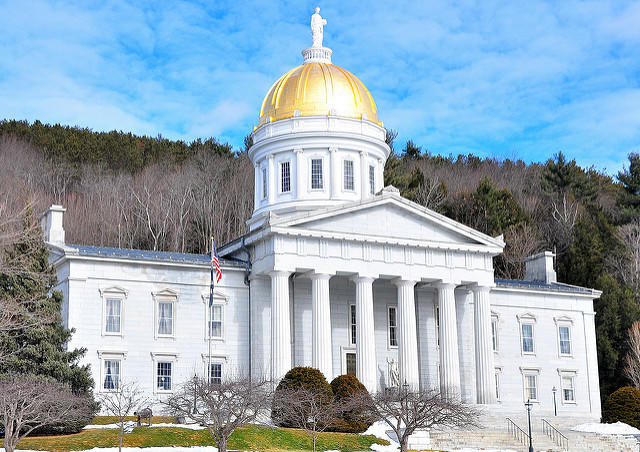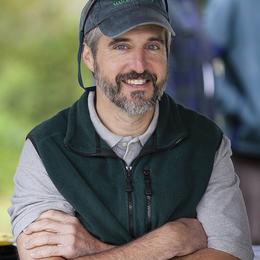“Not a bad year for birds” is how I would characterize the first year of the 2019-2020 biennium. The 2019 session is now completed and legislators have returned home to their districts. While they could apparently not agree on which day to end the session, the House and Senate did come together on some important developments for Vermont’s natural resources and environment.
Clean Water Funding: The most significant accomplishment of the session in the area of environmental protection was the passage and signature into law of S.96. This new law both creates a new system for allocating funds to address polluted storm water runoff, and provides a new revenue stream pulled from the existing rooms and meals tax. The full amount of funding currently falls short of the amount that public officials have estimated is needed but is a major step in the right direction. Implementation of the law will face some difficult hurdles but it is an important step and reflects a tri-partisan effort to make progress on a difficult challenge for which a solution has been elusive. We should all thank our Governor for making this issue a priority, Natural Resources Secretary Julie Moore for putting her shoulder to the wheel, and legislative leadership from all three parties who came together to overwhelmingly pass this bill and to provide real dollars to support the effort. Our waterways will benefits, as will birds and our communities.

Climate Crisis: Given the dire threat to birds posed by climate disruption, we have been monitoring a few different proposals that made progress during the session. A bill to ensure additional funding for weatherization of low- and moderate-income homes (H.63) passed. This bill also included provisions to require the Public Utility Commission to study how to expand weatherization and other energy efficiency investments in order to both help Vermont meet our carbon reduction targets while saving Vermonters on their energy costs. Further, legislators included additional funding for electric vehicle incentives in the transportation funding bill. Finally, a small but important bill, H.30, passed, setting deadlines for the phase out of a class of refrigerants known as “HFCs,” which are potent greenhouse gases. The bill was necessary in the face of a decision by the federal government to pull back on previous commitments to end the use of these chemicals and will drive a shift to less harmful substitutes. Learn more about H.30.
Apart from these important, though modest bills, the legislature shied away from tackling more significant proposals to address our present climate crisis, for instance through putting a price on carbon, or establishing accountability for state government to achieve our otherwise symbolic climate goals. We will be working with a broad coalition of business and non-profit organizations over the summer and fall to explore strategies for driving stronger action on this critical front.
Neonicitinoids: This class of chemicals used for killing pests is known to pose a threat to pollinators, as well as to birds and other wildlife. A small but notable bill (H.205) to classify these chemicals as a “restricted use” pesticide passed the legislature and, if signed by the Governor, will required that only certified applicators will be able to use them.
Single Use Plastics: It remains unclear, as of the time I am writing this article, whether Governor Scott will sign S.113, a bill banning the distribution of plastic carryout bags, plastic drink stirrers, and expanded polystyrene food service products, and making straws available only upon request. Vermont’s birds and wildlife will benefit from reducing the level of plastics pollution impacting our state. Hopefully, other states will follow Vermont’s lead and we can begin make a dent in this global problem.
Wetlands: Late in the session, a perplexing proposal by the Governor Scott Administration to loosen the protections for our state wetlands was debated in the House and Senate Agriculture committees. Putting more wetlands at risk of being drained for agriculture is exactly the wrong direction, given what we know about the critical role of wetlands in preventing floods, filtering water, and providing critical habitat for birds and wildlife. After hearing concerns from environmental groups, the committees pulled the reins on the proposal and instead created a legislative study committee that will meet over the summer and fall. We will monitor the work of the committee and engage as part of a coalition of environmental groups interested in this issue.
Act 250: The session was also notable for what did not happen. While the House Committee on Natural Resources, Fish and Wildlife put in long, hard hours working through many of the tough issues they were presented as they contemplate updating Vermont’s premier land use protection law by its 50th birthday in 2020, the Committee was not able to complete their work. Under Chair Amy Sheldon’s leadership, the committee members did make important progress and work over the summer and fall is expected to lay the groundwork for completing this effort next session. The proposal as currently written would make important progress towards improving protections for our forests and we look forward to ensuring those provisions advance.
Funding for the Agency of Natural Resources: Another unresolved challenge for state government is that funding for the Agency’s operations continues to lag well behind what is needed in order for the dedicated professionals at the Departments of Environmental Conservation, Fish and Wildlife, and Forests Parks and Recreation to do their work. We will continue work with our partners in the environmental community to share our perspective that this largely invisible issue to the public has major consequences for our birds and the places they need to thrive. In the meantime, we encourage you to purchase a Vermont Habitat Stamp as a great way to support the Department of Fish and Wildlife programs for protecting wildlife.




